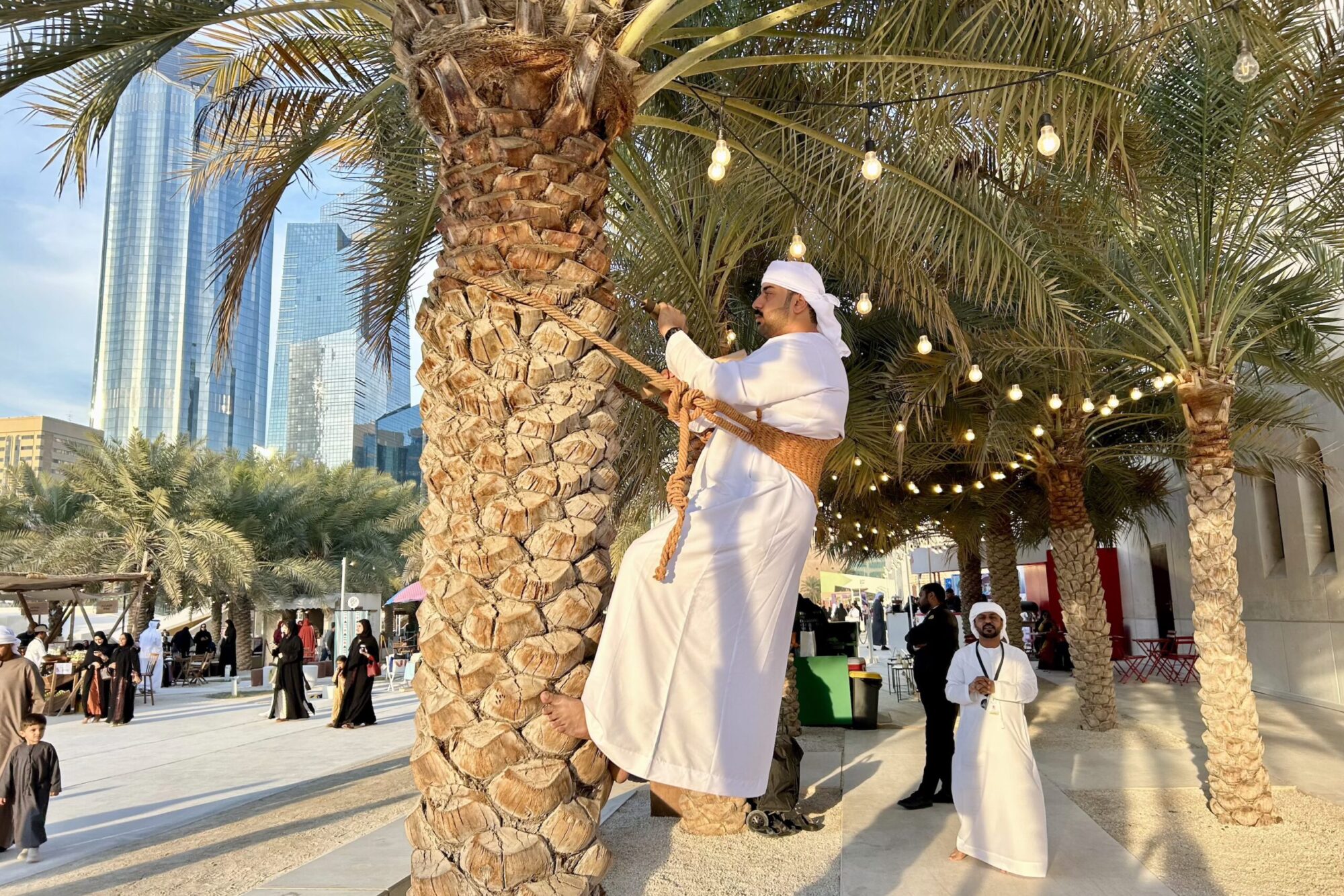Far from the bustling and modern Abu Dhabi and Dubai, a distant land is hidden in silence, frozen in time, shrouded in mystery for European tourists who visit the Arab Emirates unaware of the wonders that the country hides.
Overlooking the Gulf of Oman is Dibba Al-Fujairah (in Arabic دبا الفجيرة ), city of the Emirate of Fujaira. Among its high mountains painted in red and the crystal clear waters that bathe the beaches, there is some lonely house, built according to the canons of Arab tradition. Wain takes refuge in one of these houses.
Meet Wain
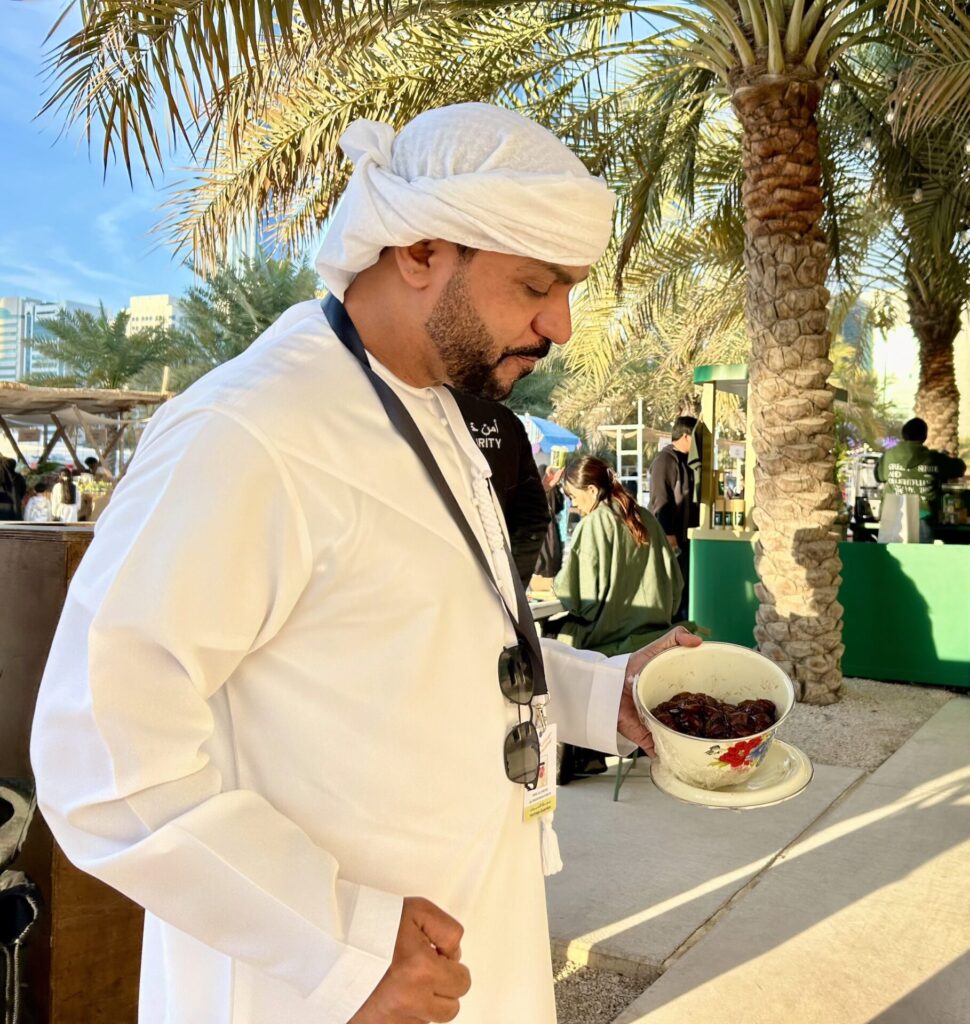
Policeman by profession and date farmer in his free time, Wain is an enthusiastic man, passionate about not only his job but also the business that his family has been passing on from generation to generation for hundreds of years. He is a welcoming man, who does not miss the opportunity to make curious tourists peek inside his passion, which with rigor and dedication has been cultivated since the day his grandfather passed away, leaving him the production as a legacy.
Wain was born and lives in Abu Dhabi, but in his free time he moves to his home in the Emirate of Al-Fujairah. Wain spends much of his time in the region’s vast mountain landscapes, discovering, learning and cultivating dates according to the Emirati tradition.
Dibba Al-Fujairah: a paradise unknown to tourists
Known primarily to locals for its crystal clear waters and beautiful rocky shores, Dibba is less well-known to tourists, often caught up in the much more notorious and flashy Dubai and Abu Dhabi.
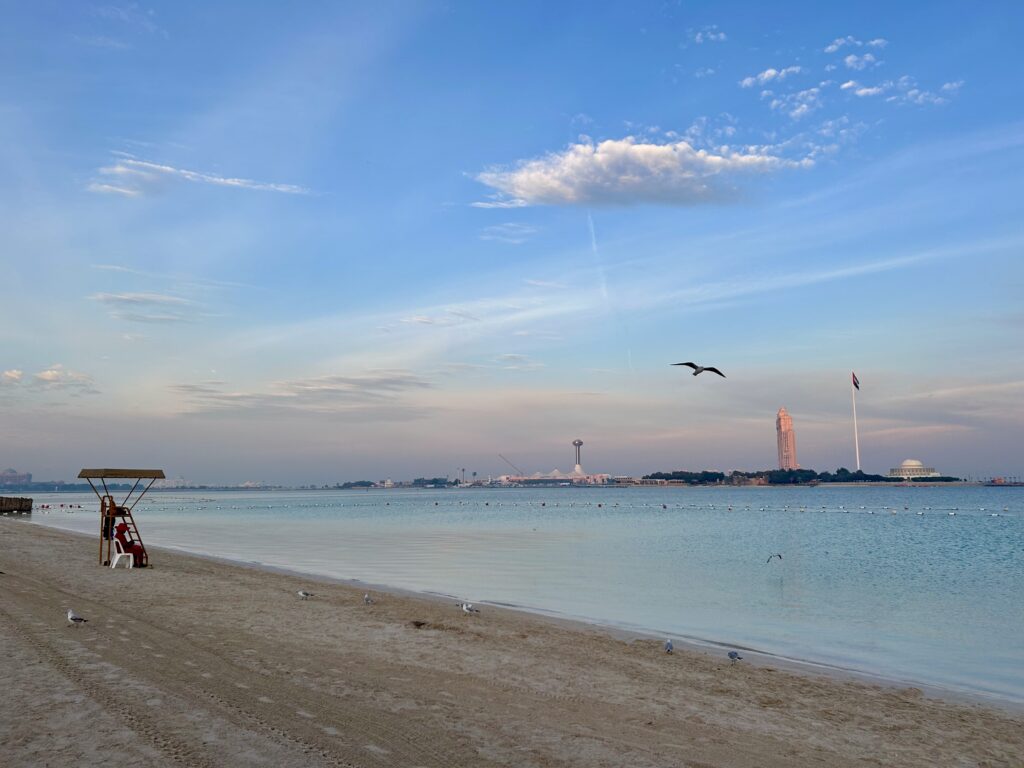
The Emirate of Fujairah (in arabic: إِمَـارَة ٱلْفُجَيْرَة Al-Fuǧaira) is one of the seven emirates that make up the country. With tits capital Fujairah, the emirate is the only one with a coastline solely on the Gulf of Oman.
The town overlooks the Gulf of Oman, and with its approximately 30,000 inhabitants, hides and supports a centuries-old tradition often unknown to tourists.
The history of the emirate of Fujairah and the region of Shamaliyah
The Emirate of Fujairah is made mainly off of what’s known as Shamaliyah, the region that covers the east coast of what is now the UAE. This area was subject to the power of Muscat, capital of Oman, until 1850, when the Arab dynasty in the Persian Gulf of the Al Qasimi, annexed the region to their Emirate of Sharjah. The agreement was signed by Sheikh Sultan bin Saqr Al Qasimi and the Sultan of Muscat Said bin Sultan.
The land, however, frequently seceded and in 1901 Sheikh Hamad bin Abdullah Al Sharqi, chief of the Emirate of Sharqiyin, declared independence from Sharjah.
At that time, the emirate of Fujairah consisted of some 150 houses and 3,000 date palms and its people lived mainly through the cultivation of these flowering and lush plants.
The cultivation of dates
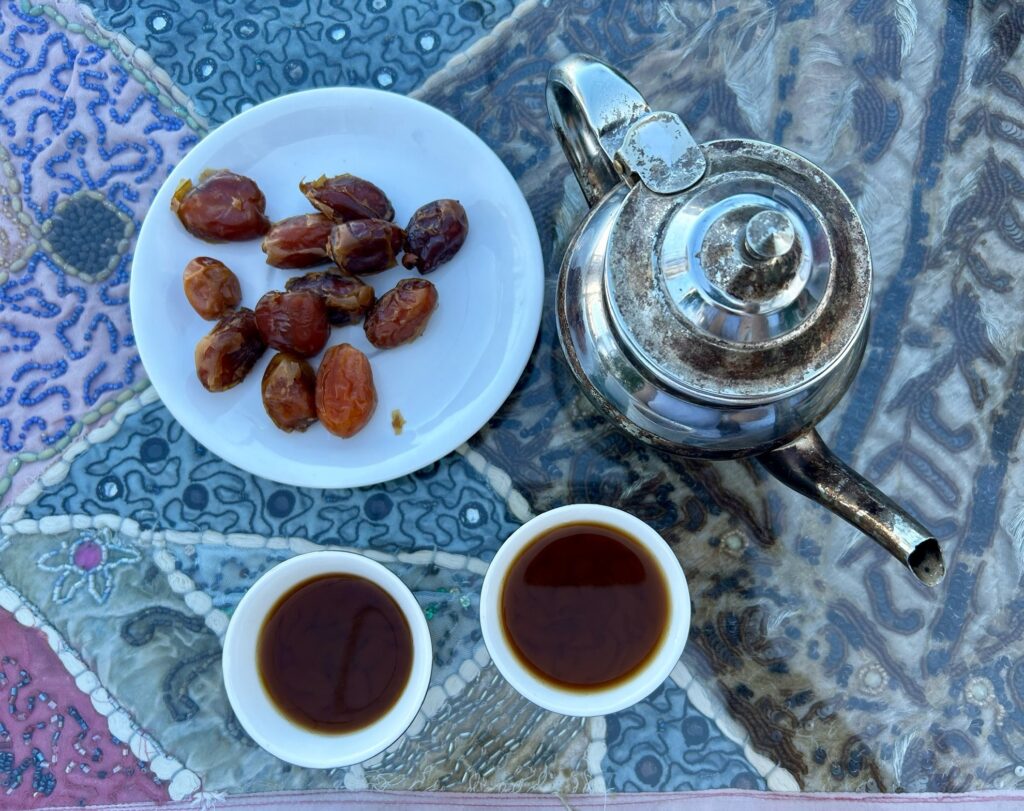
The cultivation of dates in the UAE dates back thousands of years. Archaeological evidence in fact shows a cultivation date dating back to the period between 5530 and 5320 BC. At local level, precisely on Dalma Island in Abu Dhabi, the first evidence of human consumption of dates dating back to 5110 BC has been recorded [wam.ae].
Tradition and commerce
According to Wam, Sheikh Zayed played a key role in securing the cultivation and development of date palm agriculture within the country. With his influence, the Sheik has made the UAE one of the world’s leading producers of dates with over 345,000 tons per year of production and re-exports of 250 different date varieties, with a share of the global date export market growing over five percent last year, according to “TradeMap” [wam.ae].
Moreover, the date palm was not only a vital source of sustenance for local populations. In fact, practically every part of the tree was used. Dry date palm fronds, known as “arish”, were used to build houses, shelters and windbreaks in the desert. Dried and broken palm leaves, known as “khooss”, were woven together to make mats and containers [wam.ae].
Although today they are produced industrially to feed the trade, traditional methods of cultivation and harvesting the fruit are still alive in the Emirati culture.
Traditional cultivation and care of the date plant
In addition to professionals, there are enthusiasts like Wain who, by respecting the processes passed down through centuries, manage to keep alive the many traditions related to date cultivation. They then pass this knowledge on to the younger generation of Emiratis and share it with tourists through immersive experiences.
One of the most fascinating and unique traditions associated with date cultivation is linked to the care and maintenance of the palm itself.
Caring for date plantations
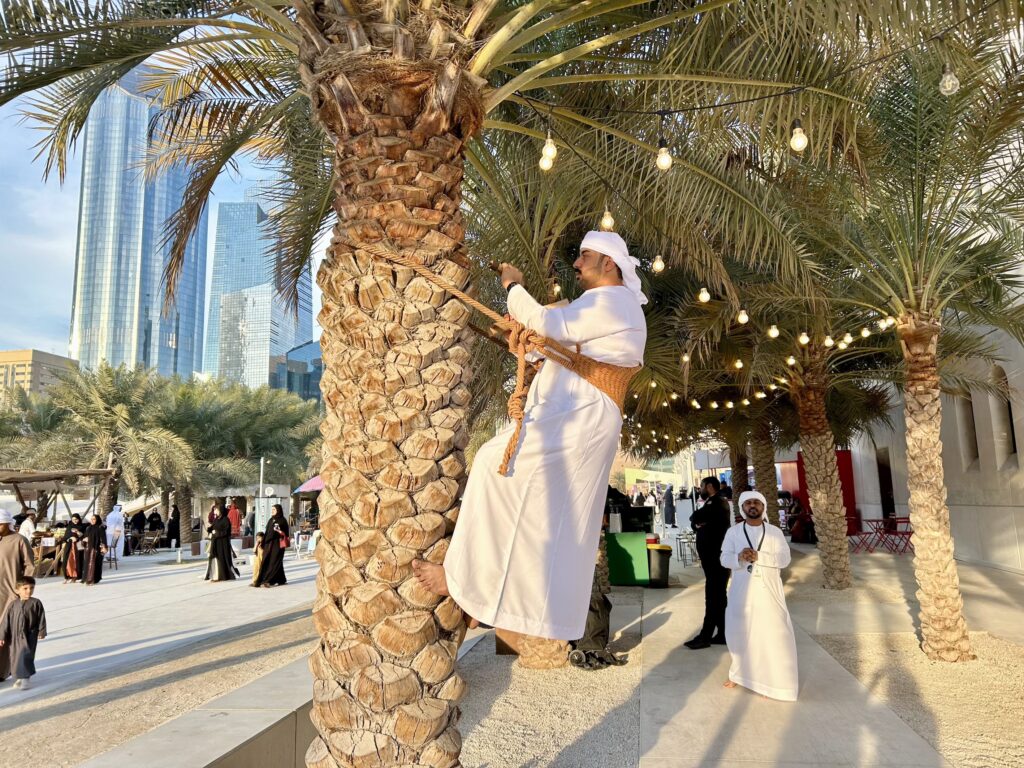
As Wain teaches, it is a tradition that an operator, tied with ropes reinforced on the back, climbs up the date palm tree nimbly. Once at the top, armed with a flat chisel, it carves precisely the trunk of the plant, gently removing the thicker bark and fibers that cover the trunk, an operation that requires skill and attention. Ropes traditionally used for climbing date palms are generally made of natural fibre. Materials such as coconut fiber (sisal rope), hemp or even the palm fiber itself are very common, since they are strong and elastic enough to bear the weight of the operator without breaking.
This ancient technique, which respects the plant’s life cycles, not only allows to preserve the health of the tree, but also stimulates its growth, making it more robust and lush. As the years pass, the tree grows richer, producing more and more abundant harvests and higher quality fruits, sweeter and numerous, thus guaranteeing a deep bond between man and nature, and a prosperity that is renewed season after season.

